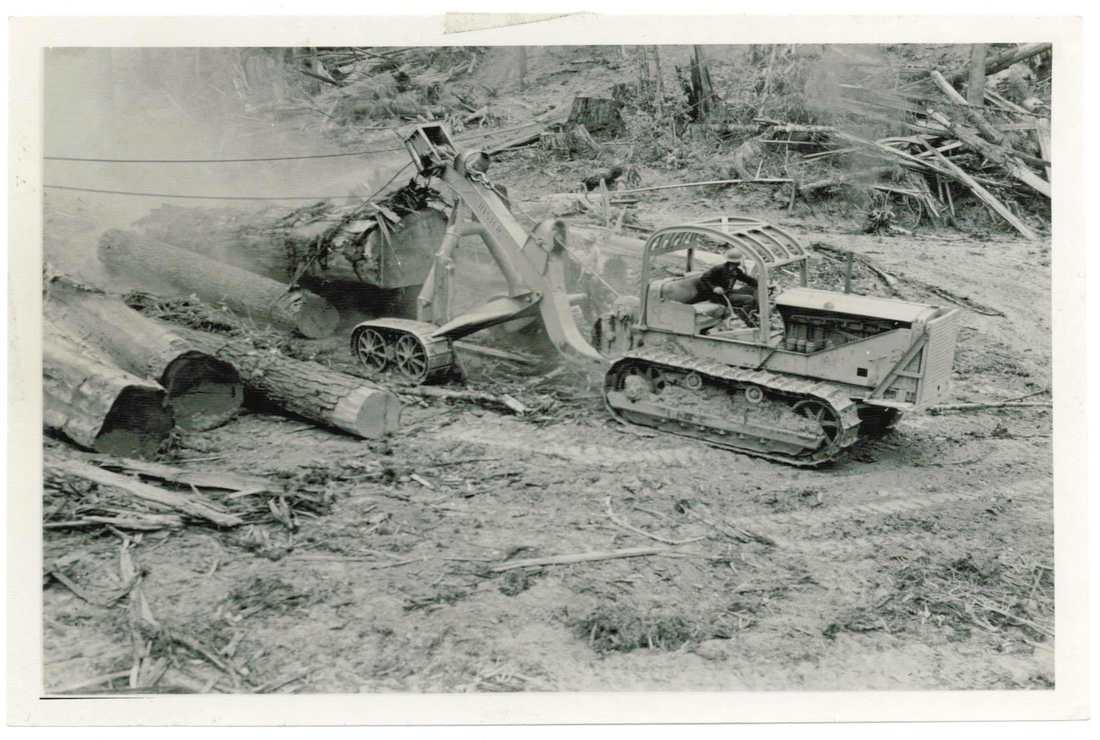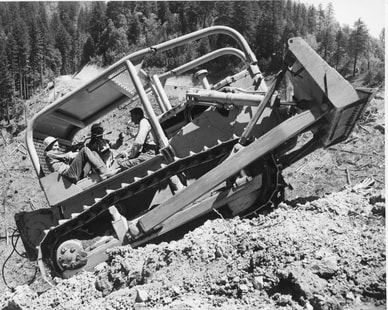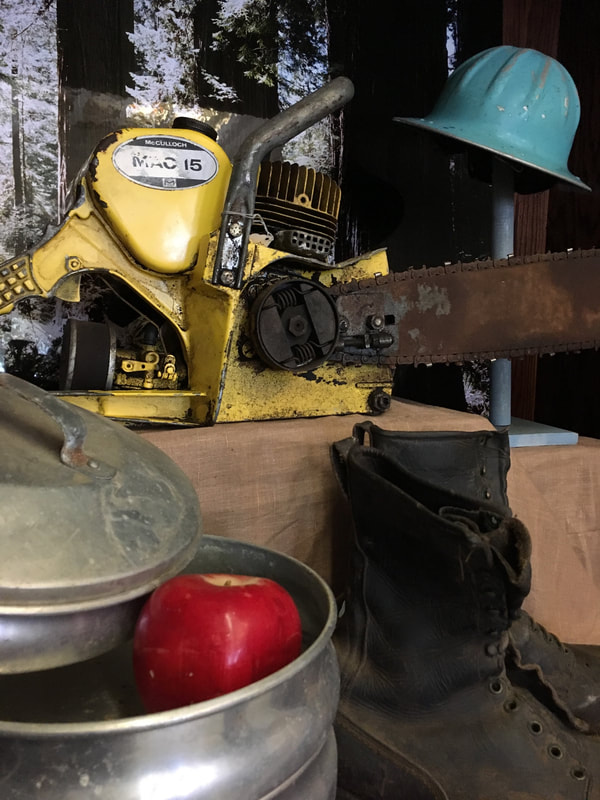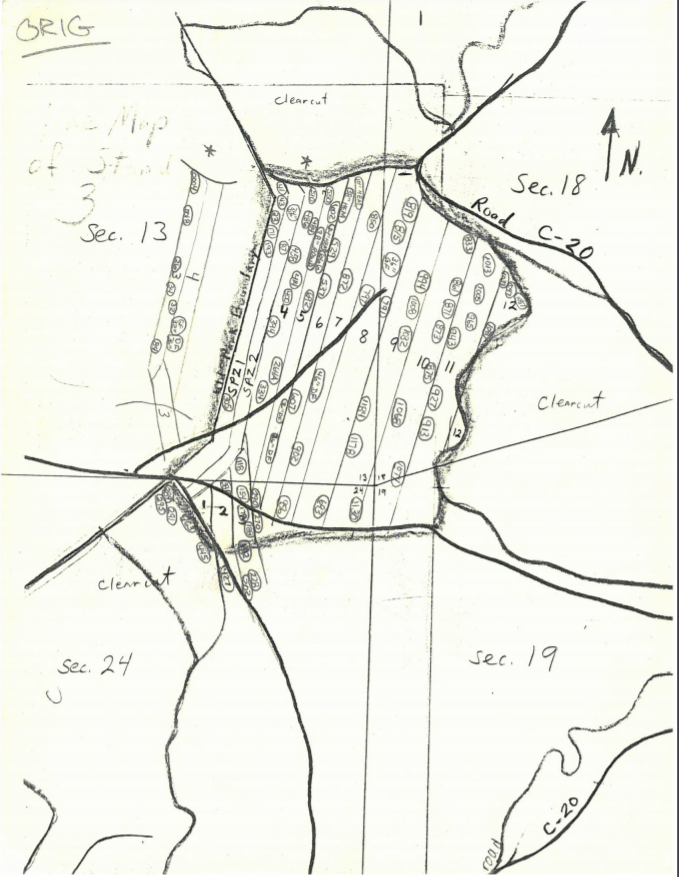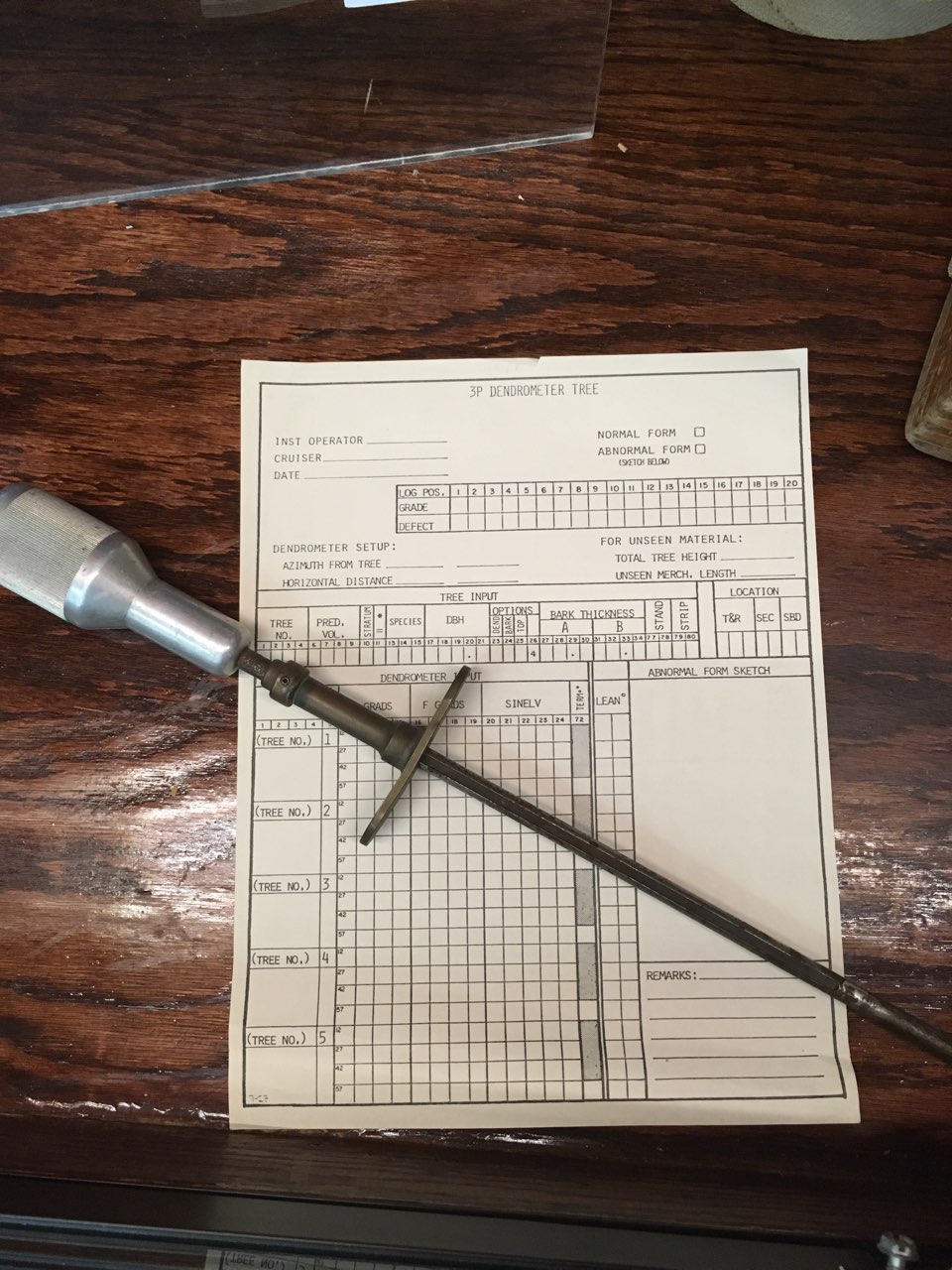Tools of the Trade
“A logger is a special breed of a man,
|
Cruising Timber
“In the 1950s, production [of redwood] reached a billion board feet per year. A few production highs were set in the 1960s but in recent years the average has settled to about 900 million board feet”
-California Redwood Association statement to the Congressional Subcommittee on Parks and Recreation, June 1966
On March 27, 1978, President Jimmy Carter signed the “Redwood National Park Expansion Act” (Public Law 95-250) expanding Redwood National Park by the addition of approximately 48,000 acres. Almost all of this acreage came from three timber companies: Arcata National Corporation (Arcata Redwood), Simpson Timber Company, and Louisiana-Pacific Corporation. This land included areas of old-growth Redwood Forest, cutover lands with growing timber, and non-forest prairie lands. PL 95-250 took these lands by eminent domain; the stated purpose was the protection of “the worm,” a ½ mile wide band of timber along Redwood Creek which was part of the original RNP created in 1968 and included the Tall Trees Grove. The Act called for just compensation (payment) for these properties to be determined by the U.S. district court in San Francisco. The court would decide the fair market value for the land and timber taken. Natural Resources Management Corporation (NRM) led by John Miles of Eureka was hired by Arcata Redwood’s attorneys to inventory and appraise their lands and timber.
|
Timber inventory, called “cruising timber”, is normally done by a combination of measuring the size and estimating the quality of a scientific sample of the total trees. Because the land in this case was some of the most productive timber growing land on earth and because the trees were so valuable, extra effort was expended. The general strategy for this cruise was to visit and measure every tree, use measuring instruments of the highest precision, update the volume tables to the conditions on this particular property, constantly train the cruisers in estimating the quality of the lumber which would come from the trees, and prepare scientific studies of other issues concerning the amount and quality of the lumber which would be produced from the timber.
|
|
Rather than cruising a sample of trees, NRM cruisers visited and measured with diameter tapes and clinometers every tree on the property. Strips 60 feet wide were created with string lines between them and every tree was counted. Every tree over 10” in diameter was measured with a tape and recorded and entered into the computer. Every tree over 40” was given a number and tagged with a popsicle stick. Then the record of trees was run through the 3P process and the preliminary volumes were compared to computer generated random numbers. All trees which exceeded their random number were revisited. Every tree over 120” in diameter was revisited.
|
|
On this revisit, the diameters were re-measured and, in order to capture the exact form of this population of trees, upper stem diameters at several points along the boles up to the top of the trees were measured with a Barr and Stroud dendrometer, an instrument developed from ones used by the military for targeting naval guns. Tree heights were re-measured using surveying transits. These two instruments were state of the art at the time of the cruise (1978-83). Since that time, transits using lasers have increased accuracy somewhat.
The above was excerpted from A Local Forestry Consultant Firm’s Role in the 1978 Redwood National Park Expansion by Frank Mileham and David Glen. The full article is available to read in our exhibit. |
|
|
|
The items in this display belonged to Brian Graham, a licensed forester for Bob Kleiner (both now deceased) and Allan Nilson, a forester surveyor from McKinleyville. Items in display are from the Patsy Givins collection. Woodsmen Coat of Arms token courtesy of Gerry Hale. Timber Grading sticks (used to determine the number of board feet in a board) courtesy of Timber Heritage Association.
|

